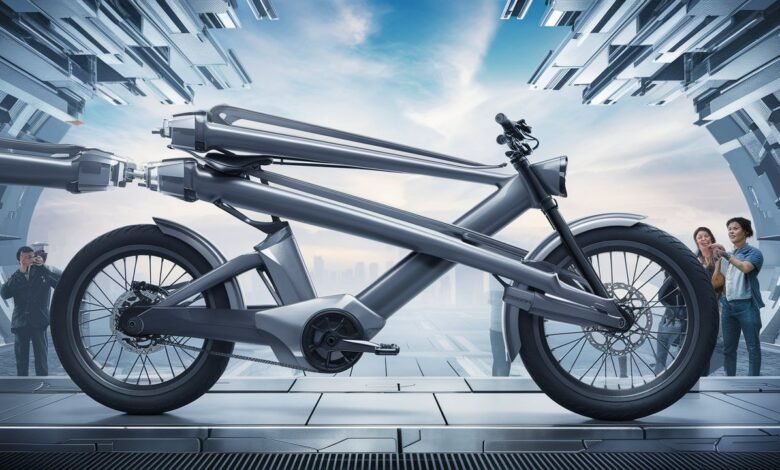Bike Verlengen As: A Complete Guide to Extending Your Bike Axle

Cycling enthusiasts often look for ways to improve the stability, performance, and adaptability of their bicycles. One common upgrade is bike verlengen as, which translates to extending the bike axle. Whether you are modifying your bike for better load capacity, enhanced stability, or to accommodate special accessories like cargo carriers and child trailers, extending the axle can be a crucial upgrade. In this comprehensive guide, we will discuss everything you need to know about extending your bike axle, including its benefits, methods, tools required, and potential drawbacks. We will also answer some frequently asked questions to ensure you have all the information you need before making any modifications.
What is Bike Verlengen As?
The term bike verlengen as refers to the process of extending the bike axle. The axle is a crucial component of any bicycle, serving as the central shaft that connects the wheels to the frame. By extending the axle, you increase the width of the wheelbase, allowing for better weight distribution, increased stability, and the ability to attach specialized components such as trailers, extra-wide tires, or additional gear.
Benefits of Extending Your Bike Axle
Extending your bike axle offers several advantages depending on the type of riding you do. Here are some of the key benefits:
1. Improved Stability
A longer axle provides a wider base, improving overall stability, especially when carrying heavy loads or riding on uneven terrain. This is particularly useful for cargo bikes and touring bikes that need to maintain balance over long distances.
2. Better Weight Distribution
A wider axle helps distribute the weight more evenly across the wheels, reducing stress on individual components. This can help prevent premature wear and tear, ensuring a longer lifespan for your bike parts.
3. Increased Compatibility with Accessories
Many bike accessories, such as trailers, pannier racks, and fat tires, require a longer axle for proper attachment. Extending the axle makes it easier to install and secure these components without compromising the bike’s performance.
4. Enhanced Comfort
For riders who frequently carry extra loads or ride long distances, a wider axle can offer greater comfort by providing a smoother ride. It also reduces strain on the rider by improving the bike’s handling and responsiveness.
Methods to Extend a Bike Axle
There are several ways to extend a bike axle, each with its own advantages and challenges. Here are the most common methods:
1. Using Axle Extenders
Axle extenders are small metal components that screw onto the existing axle, adding extra length. They are a quick and cost-effective solution, but they may not be suitable for very heavy loads or high-speed cycling.
2. Replacing the Axle with a Longer One
This method involves completely removing the existing axle and replacing it with a longer one. This is a more permanent solution and offers better durability and strength, making it ideal for heavy-duty applications.
3. Custom Axle Modification
For those who need a highly specific axle length, custom fabrication may be required. This involves machining a new axle to the exact specifications needed. While this option provides the most control over the modification, it is also the most expensive and requires specialized tools.

Tools Required for Extending a Bike Axle
Before starting the axle extension process, ensure you have the right tools and equipment. Here are some essential tools you will need:
- Wrenches and Sockets – To loosen and tighten nuts and bolts.
- Bearing Grease – To ensure smooth movement and reduce friction.
- Measuring Tape – To measure the precise axle length needed.
- Axle Extenders or Replacement Axle – Depending on the chosen method.
- Thread Locker – To secure fasteners and prevent loosening over time.
Potential Drawbacks of Extending Your Bike Axle
While extending a bike axle has several benefits, there are also some potential downsides to consider:
- Increased Weight: A longer axle can add extra weight to the bike, which may affect speed and agility.
- Handling Changes: The bike’s maneuverability may change, requiring some adjustment time for the rider.
- Possible Structural Weakness: If not installed correctly, an extended axle may create stress points that could lead to mechanical failure over time.
Frequently Asked Questions
1. Is it safe to extend my bike axle?
Yes, as long as it is done correctly using high-quality components. It is essential to ensure that all modifications are secure and properly tested before riding.
2. Will extending my axle affect my bike’s performance?
Extending the axle can improve stability and weight distribution, but it may slightly impact handling. Riders may need some time to adjust to the new feel of the bike.
3. Can I install an axle extender myself?
Yes, axle extenders are relatively simple to install using basic tools. However, for more complex modifications, professional assistance may be required.
4. How much does it cost to extend a bike axle?
The cost depends on the method used. Axle extenders are inexpensive, typically costing between $10 and $50, while replacing the axle with a longer one can range from $50 to $200. Custom modifications may be more expensive, depending on the level of machining required.
5. What type of bike benefits most from an extended axle?
Bikes that carry additional loads, such as touring bikes, cargo bikes, and fat bikes, benefit the most from an extended axle. It enhances their stability and compatibility with accessories.
Conclusion
Extending your bike axle bike verlengen as is a valuable upgrade for those looking to improve stability, increase weight distribution, and enhance accessory compatibility. Whether you choose axle extenders, replace your axle with a longer one, or opt for a custom modification, it is crucial to follow proper installation procedures to ensure safety and efficiency. While there are some potential drawbacks, the benefits often outweigh them, especially for riders who need extra support for carrying loads or navigating rough terrains. If you are unsure about the best approach for your bike, consulting a professional mechanic can help you make the right choice.



